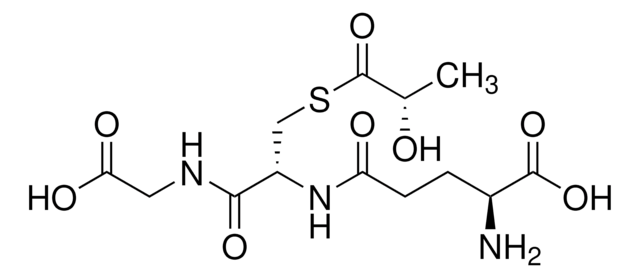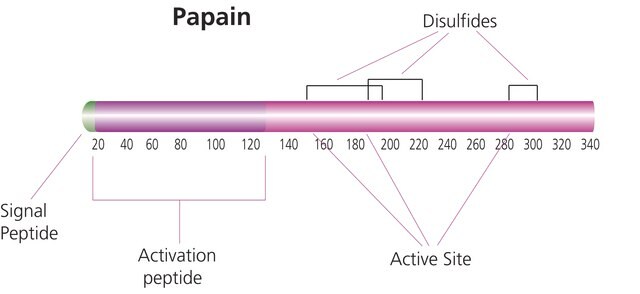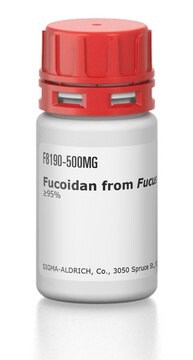G4252
Glyoxalase I from Saccharomyces cerevisiae
Grade IV, buffered aqueous glycerol solution, ≥400 units/mg protein
Synonym(s):
S-Lactoyl-glutathione methylglyoxal-lyase (isomerizing)
Sign Into View Organizational & Contract Pricing
All Photos(1)
About This Item
CAS Number:
MDL number:
UNSPSC Code:
12352204
NACRES:
NA.54
Recommended Products
type
Grade IV
form
buffered aqueous glycerol solution
specific activity
≥400 units/mg protein
foreign activity
glyoxalase II ≤1%
storage temp.
2-8°C
Looking for similar products? Visit Product Comparison Guide
General description
Glyoxalase detoxification system consists of glyoxalase (GLO)-I and GLO-II. GLO-I is a cytosolic, 42 kDa, dimeric Zn2+ metalloenzyme.
Application
Glyoxalase I from Saccharomyces cerevisiae has been used as a standard in Glyoxalase I assay for C. dilatata females and brooded encapsulated embryos. It has also been used as a standard for calibration curve generation for quantifying glyoxalase I from brain tissues and cerebral microvessels.
Biochem/physiol Actions
Glyoxalase I is universally expressed and involved in the protection against cellular damage due to cytotoxic metabolites such as advanced glycation end products (AGEs). It is an integral component of the detoxification system, catalyzing the conversion of reactive, acyclic a-oxoaldehydes into the corresponding a-hydroxyacids in a glutathione-dependent manner.
Unit Definition
One unit will form 1.0 μmole of S-lactoylglutathione from methylglyoxal and reduced glutathione per min at pH 6.6 at 25 °C.
Physical form
Solution in 50% glycerol, 0.4 M (NH4)2SO4 and 0.002 M KH2PO4 pH 6.5
Analysis Note
Protein determined by biuret.
Storage Class Code
10 - Combustible liquids
WGK
WGK 3
Flash Point(F)
Not applicable
Flash Point(C)
Not applicable
Personal Protective Equipment
dust mask type N95 (US), Eyeshields, Gloves
Certificates of Analysis (COA)
Search for Certificates of Analysis (COA) by entering the products Lot/Batch Number. Lot and Batch Numbers can be found on a product’s label following the words ‘Lot’ or ‘Batch’.
Already Own This Product?
Find documentation for the products that you have recently purchased in the Document Library.
Customers Also Viewed
Hiroya Taniguchi et al.
Molecular cancer therapeutics, 11(10), 2294-2300 (2012-07-13)
Methylglyoxal is an essential component in glycolysis and is known to be an inducer of apoptosis. Glyoxalase I (GLO1) metabolizes and inactivates methylglyoxal. GLO1 is known to be overexpressed in cancer cells and causes resistance to anticancer agents. We show
Metformin sensitizes endometrial cancer cells to chemotherapy by repressing glyoxalase I expression.
Lingling Dong et al.
The journal of obstetrics and gynaecology research, 38(8), 1077-1085 (2012-05-01)
Metformin plays an important role in the inhibition of cancer cell growth and prolongs remission durations. It reverses progestin-resistance in endometrial cancer cells by downregulating glyoxalase I (GloI) expression. This study aimed to investigate the effect of metformin on endometrial
Yufeng Wang et al.
Anticancer research, 32(8), 3219-3222 (2012-07-31)
Glyoxalase I (GLO1), an enzyme involved in the detoxification of methylglyoxal in the glycolysis pathway, has been found to be frequently overexpressed in various types of cancer. Recent studies showed that GLO1 is related to proliferation and apoptosis in human
Ravi Gupta et al.
Journal of proteome research, 11(5), 2684-2696 (2012-04-11)
Plants' distribution and productivity are adversely affected by low temperature (LT) stress. LT induced proteins were analyzed by 2-DE-nano-LC-MS/MS in shoot secretome of Hippophae rhamnoides (seabuckthorn), a Himalayan wonder shrub. Seedlings were subjected to direct freezing stress (-5 °C), cold
Miriam Urscher et al.
The FEBS journal, 279(14), 2568-2578 (2012-05-23)
Glucose consumption and therefore methylglyoxal production of human erythrocytes increase significantly upon infection with malaria parasites. The glyoxalase systems of the host-parasite unit cope with this metabolic challenge by catalyzing the removal of harmful methylglyoxal. Thus, glyoxalase 1 from the
Our team of scientists has experience in all areas of research including Life Science, Material Science, Chemical Synthesis, Chromatography, Analytical and many others.
Contact Technical Service















